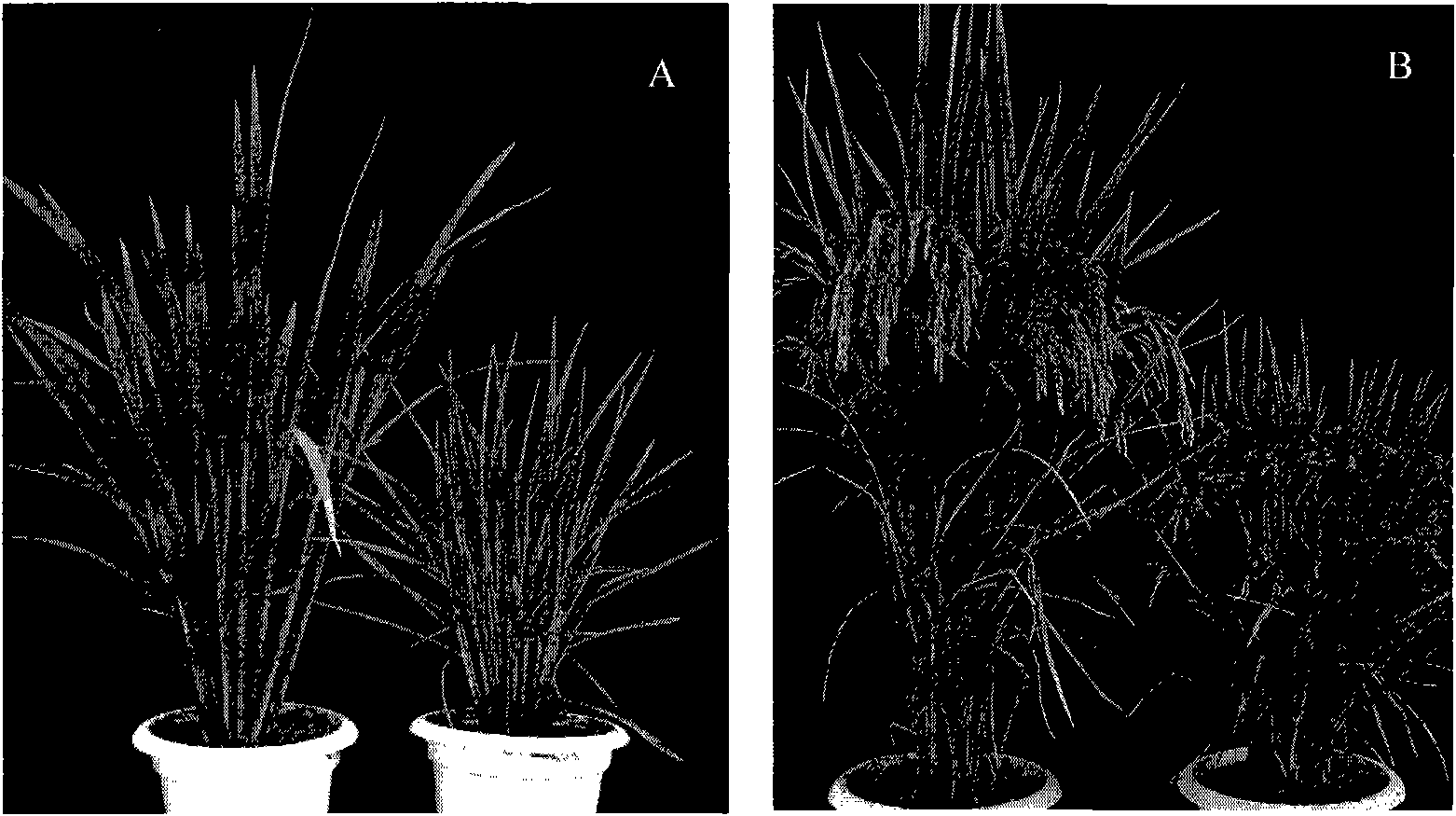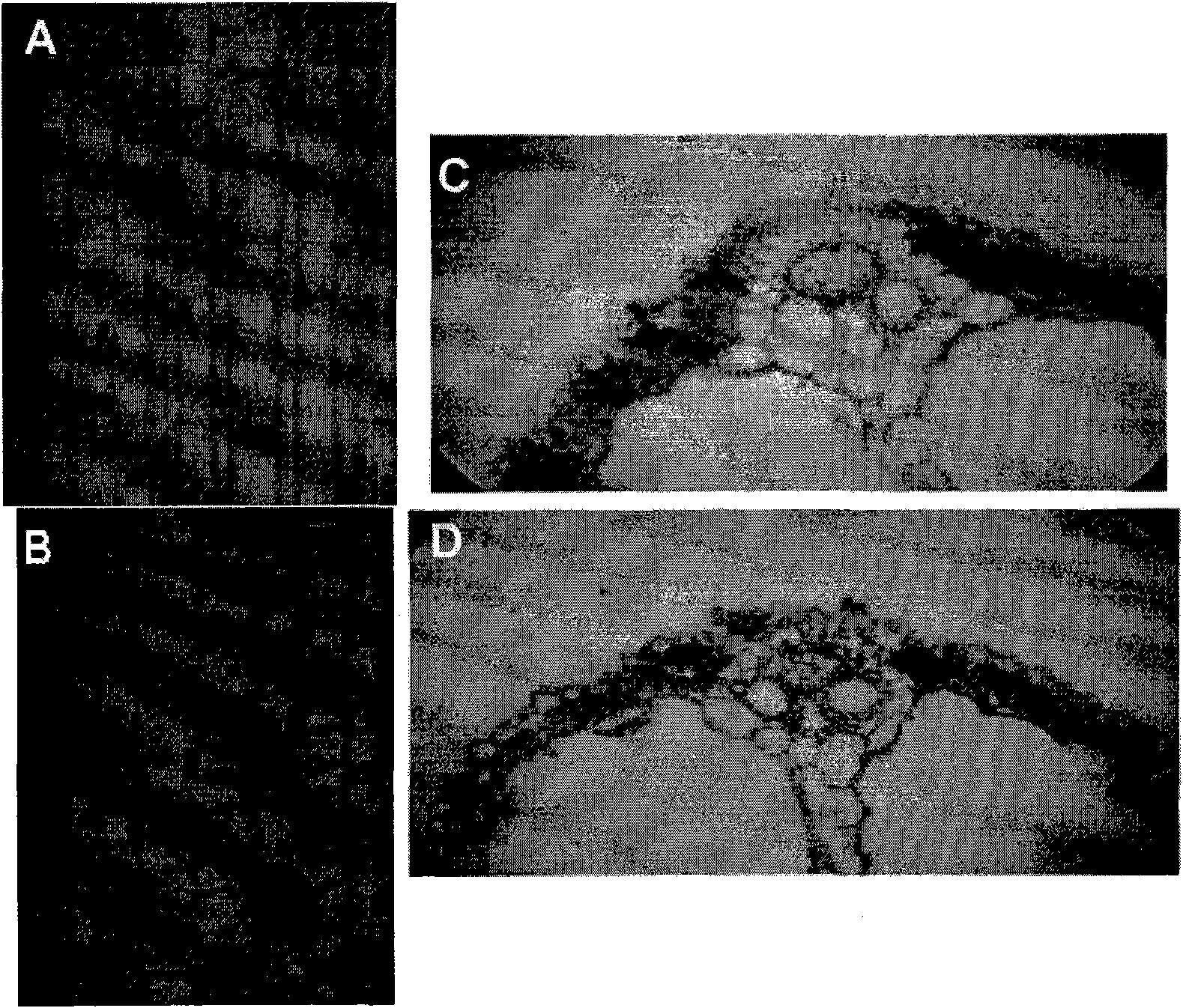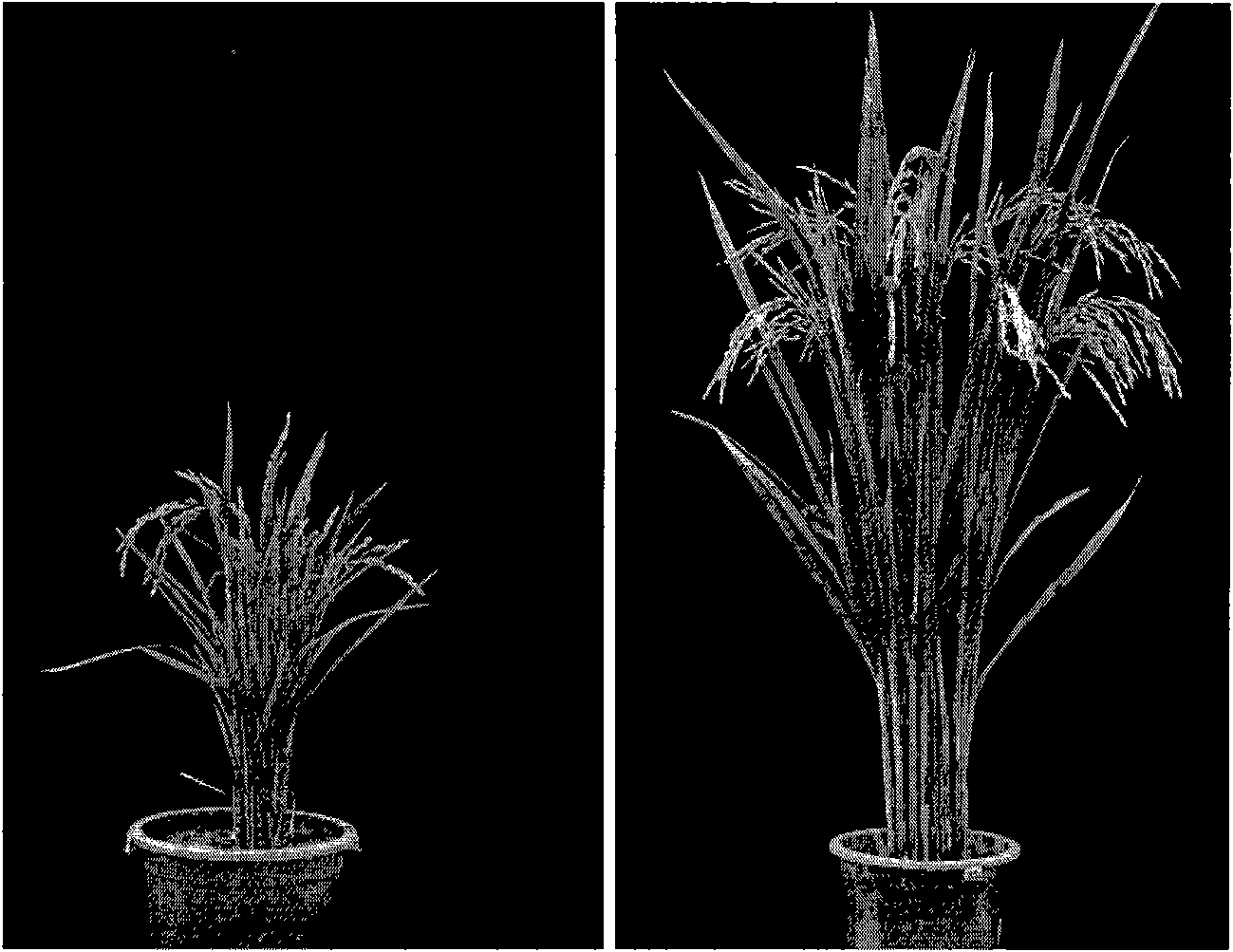Rice final height-related protein, coding gene thereof and application thereof
An encoding gene and high correlation technology is applied to the rice plant height related protein and its encoding gene and application field, and can solve the problem that the composition of sugar groups and the type of glycosidic bonds cannot be inferred.
- Summary
- Abstract
- Description
- Claims
- Application Information
AI Technical Summary
Problems solved by technology
Method used
Image
Examples
Embodiment 1
[0036] Example 1, Obtaining the full-length ORF of ND1 gene
[0037] 1. Rice narrow-leaf dwarf mutant nd1
[0038] a) Phenotype analysis of rice narrow-leaf dwarf mutant nd1
[0039] The seeds of the indica rice variety Zhongxian 3037 were irradiated with Co60 rays, and a dwarf and narrow-leaf mutant was screened, named nd1 (narrow leaf and dwarf 1). The basic characteristics of the mutant are: the plant is dwarfed, the leaves are narrowed and semi-involuted, and the number of tillers is increased. nd1 has mutant traits from the seedling stage, such as figure 1 As shown in A, the phenotype is more obvious after the plant matures, such as figure 1 Shown in B. After heading, the plant height of nd1 was about 60% of the wild-type plant height, and each leaf became narrower, shorter in length, and semi-involuted. The light energy utilization efficiency of the PSII system is an important indicator of plant senescence, and the light energy utilization efficiency of the plant le...
Embodiment 3
[0074] Embodiment 3, ND1 functional complementation experiment
[0075] 1) Construction of complementary expression vector pCsld4
[0076] BAC OsJNBa0027H05 (purchased from the National Gene Research Center of the Chinese Academy of Sciences) was digested with XbaI and HpaI to obtain a full-length DNA sequence containing 3005 bases upstream of the start codon ATG of ND1 and 3360 bases after the stop codon TGA. The long-sequence DNA fragment (10268bp) was cloned between the XbaI and SmaI recognition sites of pCAMBIA1300 (CAMBIA, Canberra, Australia), and the complementary expression vector pCsld4 was constructed. The constructed complementary vector pCsld4 was digested with BamHI, the coding region of ND1 gene was removed, and the 5'promoter region and 3'regulatory region of the gene were retained, thus the complementary control vector pCsld4T was constructed.
[0077] 2) ND1 function complementary
[0078] Complementary expression vector pCsld4 and complementary control vect...
Embodiment 4
[0080] Embodiment 4, cultivating the paddy rice that dwarf stalk and / or tiller number increase
[0081] 1) Construction of ND1 RNA interference vector
[0082] Total RNA was extracted from the leaves of rice Zhongxian 3037, and the first-strand cDNA was synthesized by reverse transcription using Oligo(dt)-18 as a primer and the extracted total RNA as a template. Using this cDNA as a template, primer 3(5'- ctgcag cattcacatgagagatcctc-3, the underline is the PstI recognition site) and primer 4 (5'- ctgcag agaagttgagcacgtggccg-3, the underline is the PstI recognition site), carry out the PCR amplification reaction, and the reaction conditions are as follows:
[0083] Reaction volume 50μl: template, 5μl (5ng); forward primer primer 3 and reverse primer primer 4, each final concentration 0.2μM; dNTP, each final concentration 200μM; LA Taq DNA polymerase, 2.5U; 10×Taq DNA polymerase Enzyme buffer, 5 μl; make up to 50 μl volume with double distilled water.
[0084] The reaction...
PUM
 Login to View More
Login to View More Abstract
Description
Claims
Application Information
 Login to View More
Login to View More - R&D
- Intellectual Property
- Life Sciences
- Materials
- Tech Scout
- Unparalleled Data Quality
- Higher Quality Content
- 60% Fewer Hallucinations
Browse by: Latest US Patents, China's latest patents, Technical Efficacy Thesaurus, Application Domain, Technology Topic, Popular Technical Reports.
© 2025 PatSnap. All rights reserved.Legal|Privacy policy|Modern Slavery Act Transparency Statement|Sitemap|About US| Contact US: help@patsnap.com



